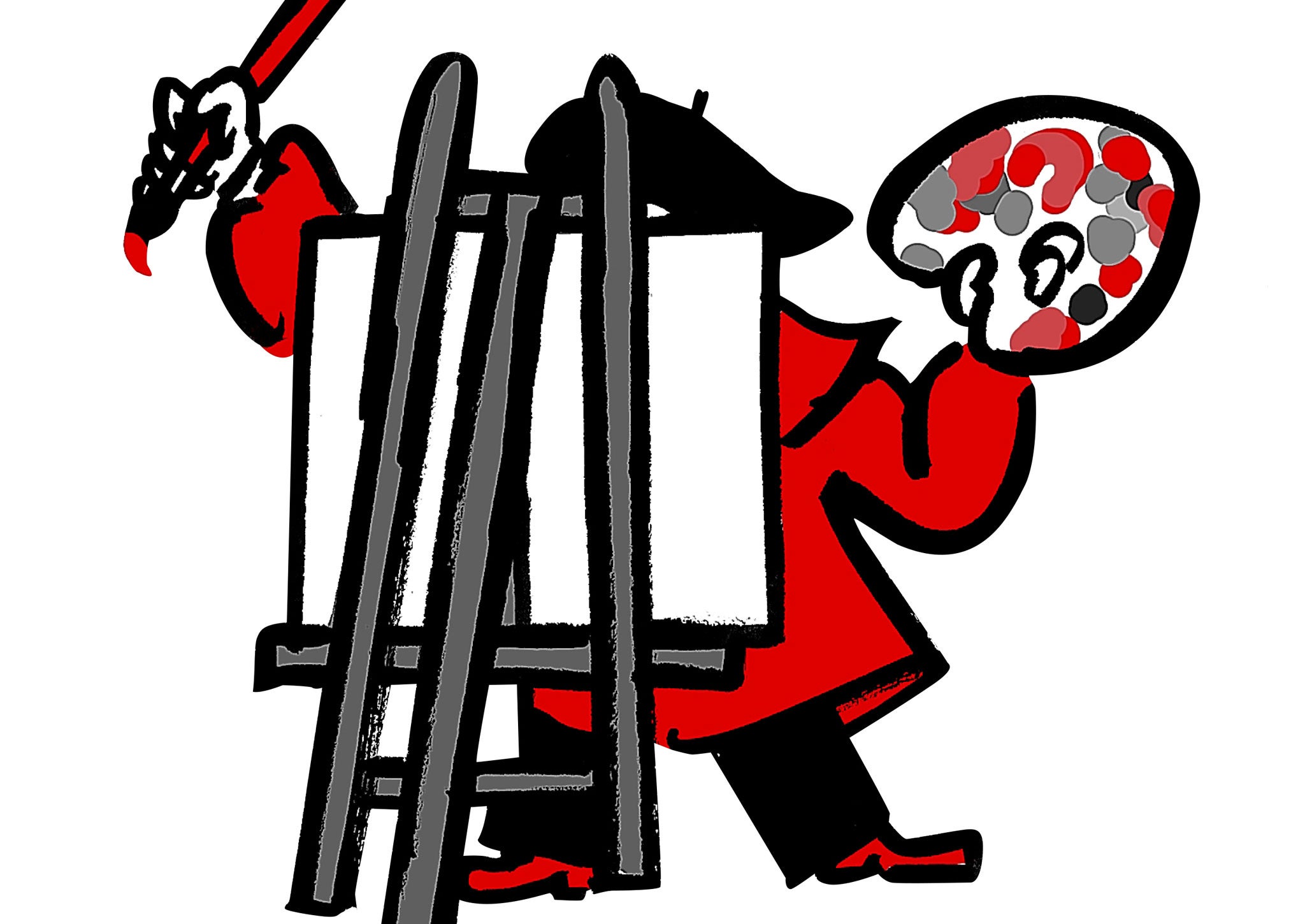The power of anonymity lies in the freedom it grants
Reclusive artists such as Banksy and Haruki Murakami teach us the special value of being left alone


Your support helps us to tell the story
From reproductive rights to climate change to Big Tech, The Independent is on the ground when the story is developing. Whether it's investigating the financials of Elon Musk's pro-Trump PAC or producing our latest documentary, 'The A Word', which shines a light on the American women fighting for reproductive rights, we know how important it is to parse out the facts from the messaging.
At such a critical moment in US history, we need reporters on the ground. Your donation allows us to keep sending journalists to speak to both sides of the story.
The Independent is trusted by Americans across the entire political spectrum. And unlike many other quality news outlets, we choose not to lock Americans out of our reporting and analysis with paywalls. We believe quality journalism should be available to everyone, paid for by those who can afford it.
Your support makes all the difference.Last weekend I encountered one of the literary world’s shyest and best-beloved creatures – in front of 600 devotees. It would hardly be fair to describe the friendly and funny Haruki Murakami, whom I interviewed on stage during the Edinburgh International Book Festival, as a “recluse”. Save that loaded term for the likes of J D Salinger or, on a lower level of obscurity, Thomas Pynchon and Harper Lee.
On the contrary: the current tour of the mega-selling Japanese author will take in a central London signing session this morning. In the meantime, as he told me and the small army of fans, Murakami has been to Jura to pursue his love of fine single malt. But he does enjoy his privacy, never surfaces for public events in Japan, and prefers to communicate with a global readership of many millions via the intimate enchantment of his books. Duller stars, take note.
During the interview, the Edinburgh audience scrupulously respected Murakami’s request not to take pictures or videos. Yet he’s an ocean away from the vain and haughty celeb: open, modest and thoughtful, whether dubbing himself a simple “tinkerer” with words like the engineer-hero of his new novel (Colorless Tsukuru Tazaki and his Years of Pilgrimage), or equating the creative process and its dive into the unconscious with Orpheus’s descent into the underworld. But by backing away from the limelight for so long, Murakami has inadvertently deepened his charisma. His followers, even if they manage to catch him only once in a blue moon, seem to like it that way.
Murakami, who writes so hauntingly about the mysterious in-between states of life and mind, himself thrives in a sort of limbo. He’s at once extremely famous and virtually anonymous. In the era of total electronic recall and round-the-clock media scrutiny, the attractions of the low profile shine brighter than ever. Wary of excess exposure, other star authors have tried to inhabit this liminal space between spotlight and shadow. J K Rowling occasionally breaks cover for a festival or charity gig, and shares (some would say over-shares) plenty of ideas about her characters via the Pottermore website.
Yet she also felt the need to dive underground in order to forge a second brand as a crime writer under the pseudonym of “Robert Galbraith”. The mask slipped soon enough, as pseudonyms always will. Still, the gambit betrayed a powerful urge to be read through Potter-free eyes. At least Rowling’s venture turned out better than Doris Lessing’s defiant experiment in pseudonymity. Her novels written in the early 1980s as “Jane Somers” met rejection from her usual British publisher (although they were taken on elsewhere).
Push it far enough, however, and the retreat from attention becomes a paradoxical bid for notoriety. Take the street artist Banksy. This week, the globetrotting Bristolian prankster donated the £403,000 proceeds from the sale of Mobile Lovers to the Broad Plain Boys’ Club, on whose wall the stencil first appeared this April. Now, to sharpen the ironies, a “Thanks Banksy” mural painted by members as a tribute to their benefactor will highlight their club’s location.
Secrecy can breed publicity. Without his jealously guarded anonymity, how famous would Banksy be? On his suitably gnomic website, the artist affirms that “Banksy is not represented by an art gallery, is not on Facebook and has never used Twitter”. All fine and dandy, so long as the auction houses crowd around every overnight sprouting and Sotheby’s can curate (as it did this summer) an “unauthorised retrospective” of the work. Incidentally, the wall-decorator’s words about the Sotheby’s show neatly capture the art – a YBA speciality – of mocking the market while reaping its benefits: “As a kid I always dreamed of growing up to be a character in Robin Hood. I never realised I’d end up playing one of the gold coins.”
If you believe the press, Banksy was “outed” six years ago. You may access both his alleged name and his family history at the click of a mouse. Where’s the fun in that? I could equally inform you that the SAS soldier turned action-thriller writer known as “Andy McNab” is widely understood to be... But then you might want to kill me. In the age of surveillance technology, a little mystery teases and pleases.
In Banksy’s case, the business of preserving anonymity belongs with the self-conscious “guerrilla” politics that sets his art, and its unheralded mushroom-like apparitions all the way from the East End to the West Bank, against the hi-tech forces of command and control. Surveillance and its constraints not only dog the artist’s progress from one murky street corner to another. They lends him a trademark theme. Mobile Lovers itself depicts a couple who shun each other’s flesh-and-blood presence for joint glances at their ever-winking screens. “One Nation under CCTV” proclaimed a 2008 London mural, aptly inscribed in the shadow of the BT Tower. And his celebrated Spy Booth, designed around a phone box in Cheltenham, scoffs at the spooks in the suburban backyard of GCHQ itself.
So anonymity for Bristol’s elusive pimpernel plays a part in his high-spirited rage against the oversight and monitoring machine – whether it’s spy agencies, search engines or online retailers that keep the tabs on us. It links the artist to (for instance) the cyber-hackers of the “Anonymous” network, who have themselves come under fire for their unaccountable online vigilantism. In response, the professional snoopers – both state and corporate – purr that “If you have nothing to hide, you have nothing to fear”. Well, if you really have nothing you would ever wish to hide, then you’re either a saint or a psychopath. Since great saints from Augustine onwards have fessed up to all manner of unholy passions, that only leaves the second option.
Banksy stages the conundrum of total invisibility yoked to total celebrity. More subtly, a Rowling or a Murakami seeks to balance public and private selves. And it works: we mostly accept the good faith of the famous who – like the retiring Greta Garbo, 70 years ago – sometimes want to be alone. Their popularity appears to contradict the new-media trend towards X-ray transparency, with every wardrobe malfunction, marital contretemps or late‑night indiscretion tweeted, Facebooked and Instagrammed into an eternity of ridicule or shame.
“You have zero privacy anyway. Get over it,” runs the mantra often attributed to Scott McNealy, co-founder of Sun Microsystems. More platitude than provocation now, that opinion trundles lazily from one discussion of social media to another. In fact, there is some evidence that the vogue for full online nakedness may have reached a peak. Danah Boyd, both a researcher for Microsoft and a fellow at Harvard University, has studied the social life of “networked teens”. She recently published a book about them, entitled It’s Complicated. It is.
Some of her young subjects practise both extreme confession and complete concealment, almost in the same digital breath. Via the practices of “whitewalling” or “super-logoff”, they may let it all hang out on a favourite site, then wipe it all away. “In many ways, deactivation is a way of not letting the digital body stick around when the person is not present,” Boyd writes. “This is a great risk reduction strategy if you’re worried about people who might look and misinterpret.”
Throughout history, anonymity or pseudonymity has had many uses – whether hiding rebels from the gaze of the authorities (remember “I am Spartacus!”?) or allowing the likes of Jane Austen (“By a Lady”) and the Brontë sisters (“Acton, Ellis and Currer Bell”) an entrée into the male world of literature.
A recent TED talk in London celebrated anonymity as an arena of freedom. It was given by a cancer epidemiologist who has co-authored scientific papers such as “Chlorpyrifos and neurodevelopmental effects: a literature review and expert elicitation of research and policy” (on the vital topic of children’s exposure to pesticides). But the event might have escaped much notice had Dr Brooke Magnanti, once known as the blogging sex worker Belle de Jour, not also had good reason to think hard about the interface between the official and unofficial persona.
Anonymity, Dr Magnanti maintains, has often given voice and force to the marginal, the persecuted, the stigmatised. During her Belle de Jour days, “if you had known my name when I wrote my blog, you would not have taken it seriously”. Now, the “nothing to hide, nothing to fear” brigade labels the nameless as antisocial elements. She warns that “a narrative that paints all people who use anonymity as trolls or criminals is playing into the hands of much bigger interests” – above all, “the hands of governments that want to silence dissent”.
“I contain multitudes,” Walt Whitman wrote. So do we all. Some sides of our multifaceted identity might hanker for publicity, while others crave anonymity. If so, then technology as well as social policy should allow us to slide up and down a scale of illumination: more a dimmer switch, perhaps, than an on-off button.
As it happens, Haruki Murakami himself often imagines characters who nurture a shadow or a double, a secret or a subterranean self. And anonymity will sometimes suit that shadow side, which might turn out to resemble an angel as often as a troll. Like the man said: Get over it.
Join our commenting forum
Join thought-provoking conversations, follow other Independent readers and see their replies
Comments